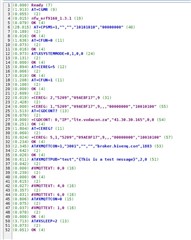Good day I am wondering if you can help me.
For background information.
Network - NB-iot
Firmware - 1.3.1
Software - Serial LTE Modem
Hardware - nrf9160dk
I am trying to set the requested active time down so that when I go into idle to save power and keep my IP connection that the modem doesn't stay active for 60 seconds there after.
The device is going into low power mode but only after 60 seconds.
I will attach a screen shot of the AT-commands that I take to get to the point where I'd like to go into low power but the Requested Active Time does not change.
I came across this following link while attempting to get my power consumption down.
I tried the command AT+CPSMS=1,"","","10101010","00000000" to set the periodic TAU to 10 minutes and the requested active time to 0 and to 2 (00000001) seconds.
But they had no influence on the 60 seconds of high power consumption after issuing the AT#XSLEEP=2 to put the system into idle.
If anyone has any input as to where I am going wrong I will greatly appreciate it.




